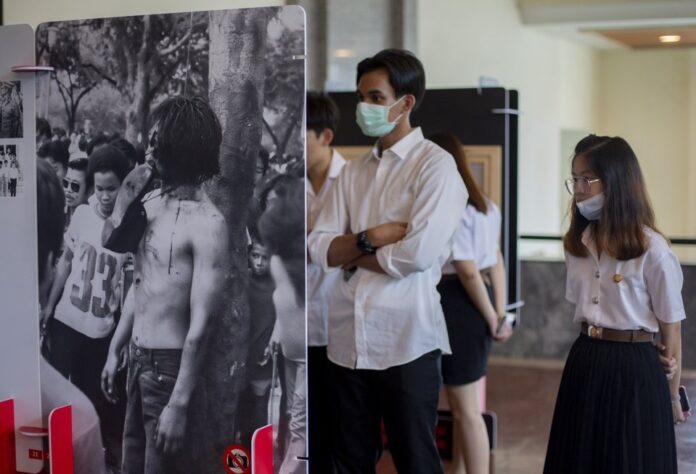
BANGKOK — The location of the Oct 6, 1976 massacre reflects how unsettling the history of that incident remains in Thailand.
Instead of being erected at Sanam Luang where the orgy of lynching took place against mostly students who were branded as communists sympathizers if not communist, the memorial is found inside Thammasat University.
And although it’s just a few meters away from the real site of the killing, it’s not in a public area. Also, it took two decades after the incident before those directly affected by the incidents could muster the strength to raise funds and finally erected a humble memorial that contains the date of the incident and bronze brass relief with images of some mutilated bodies of those killed and hanged.
Read: How Student Protests Spark Interest in Thammasat Massacre
For the first two decades, most feel there was no space to talk about the atrocity as victims. Officially, 46 were killed, 41 from the pro-democracy side while five from t other side.
Back then, to be accused of being a communist is to be judged as an enemy of not just the Thai state but Thailand. Now, Thailand enjoys very warm relations with China, Vietnam and Laos – all supposedly socialist states ruled by Communist parties.
Forty four years on, the incident is still far from being remembered collectively by society at large. For more than four decades, only those who went through the horrific incident observed it emotionally. Others don’t even notice and no major political party visits the memorial.
As members of that generation are now aging and in their sixties, a new generation came just in time to keep history and memories alive.
In fact, this week saw unprecedented interests among young Thais about the Oct 6, 1976 massacre.
Many visited a temporary exhibition of the incident at the lobby of Thammasat University’s Main Auditorium Hall which concludes today.
I met one of the volunteer staff at the exhibition on Monday and she was just 18.
Yanisa Vararaksapong, a first-year student at Chulalongkorn University who volunteered to assist visitors told me she didn’t learn much at all from school about the massacre. This despite the fact that she was educated at one of the top prep schools in Thailand, Triam Udom Suksa.
“I learnt so little about it in school,” she said.
Yanisa also told me she relied more on online information about the Oct 6 massacre.
“It’s an information that has been covered up for a long time,” the 18-year-old student who was born over two decades and half after the incident told me. “There was no attempt to really understand the causes in depth or debate about the incident.”
Yanisa was not alone among young Thais rediscovering the darkest chapter in modern Thai political history, however.
On the evening of Monday, I took an hour of guided tour, which was led by Chulalongkorn University political scientist and Oct 6 online archivist Puangthong Pawakapan and roughly two thirds of those who attended were below 30 years of age.
Same Sky Books also reprinted 2,000 new copies of a second-edition of a chronicle of the Oct 6 incident by historian Thongchai Winichakul which was first published in 2018.
The struggle to plant this dark chapter of Thai political history in the memories of Thai society so such atrocity may never be repeated again is not over by any long shot.
But at least, it appears that some from a much younger generation are all willing to carry on the torch against historical amnesia.












































